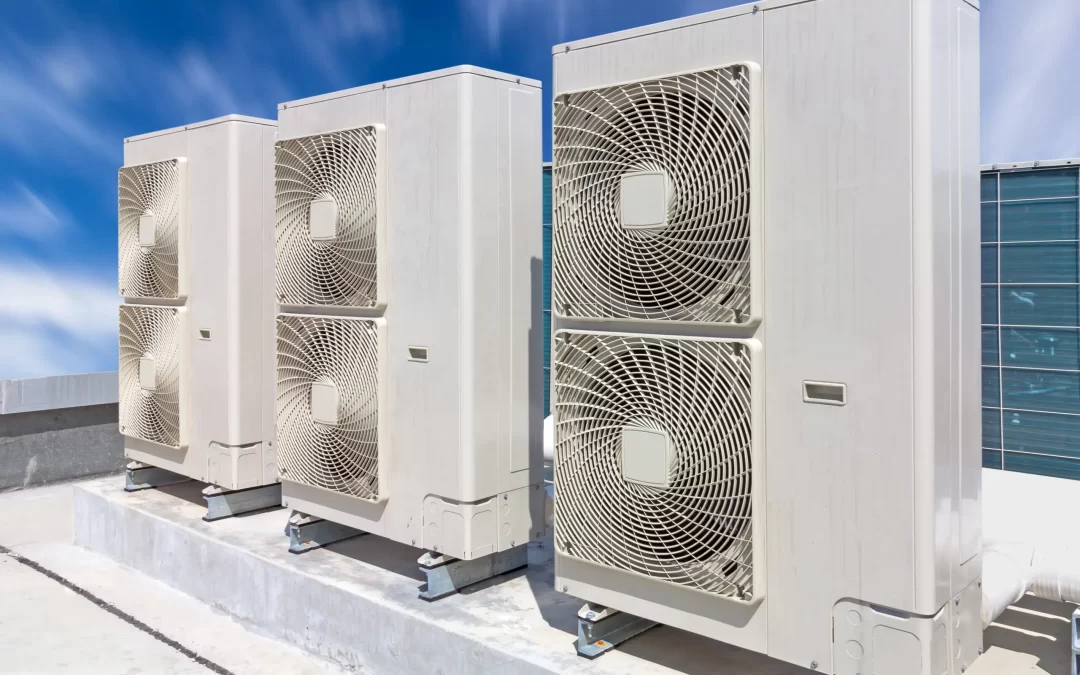What is a VRF HVAC System?
An advanced heating and cooling system, a Variable Refrigerant Flow (VRF) system is ideal for commercial and residential buildings alike. With VRF systems, you can manage the flow of refrigerant on an as-needed basis, allowing for more accurate temperature regulation and greater energy efficiency than with conventional HVAC systems that rely on ducts to move air and use static compressors. By linking numerous indoor units to a central outside unit, a variable refrigerant flow (VRF) system can heat and cool various areas of a building at the same time.
This adaptability allows for personalized temperature management for different areas, maximizing comfort while reducing energy use. Instead of just turning the system on and off, like traditional systems do, VRF systems may vary the refrigerant flow to meet the unique heating or cooling needs of each zone. In addition to improving comfort, this dynamic operation reduces energy usage by adjusting output based on actual needs. A further feature that allows for flexibility in installation and design is the fact that VRF systems may be set up in either ducted or ductless setups.
For situations where conventional ducting would be inconvenient due to lack of space or design constraints, ductless arrangements, similar to mini-split systems, are an excellent choice. Overall, variable refrigerant flow (VRF) HVAC systems are an effective and cutting-edge option for heating and cooling buildings and homes. These systems provide precise control, reduce energy consumption, and are very customizable in terms of design and installation.
What Sets a VRF System Apart?
As opposed to conventional split systems, which rely on water-based cooling methods, variable refrigerant flow (VRF) systems use only refrigerant. Because they don’t use coils or chillers, VRF systems are quick to respond and can adjust to different weather conditions. The key component of VRF systems are inverter compressors, which enable compressor motors to run at varied speeds to save energy.
The ability to integrate numerous air handlers into a single VRF system is a defining characteristic of these systems. Avoiding the need for ductwork, customers are able to customize their heating and cooling to the specific needs of each room or space by installing indoor units on the wall or ceiling. This decentralized method of air distribution highlights the precision and adaptability of VRF systems, which represent an enormous change in HVAC technology towards efficiency and personalization.
Types of VRF Systems:
The versatility, low energy consumption, and capacity to simultaneously heat and cool several zones in a building have contributed to the rising popularity of Variable Refrigerant Flow (VRF) systems in the HVAC (Heating, Ventilation, and Air Conditioning) industry. Different varieties of VRF systems meet different needs and provide different benefits:
Heat Recovery or Heat Pump:
- Heat Recovery: Multiple zones in a building can be heated or cooled at the same time with a heat recovery variable refrigerant flow (VRF) system. To accomplish this, a three-pipe design is employed, which permits the movement of heat energy from areas that need cooling to those that need heating. Buildings with varying temperature requirements, such as apartment complexes, universities, and big business buildings, benefit greatly from this capability.
- Heat Pump: On the other hand, heat pump VRF systems usually have a two-pipe layout and can only deliver cooling or heating, not both at once. Although heat recovery systems are more adaptable, heat pump VRF systems have a lower maintenance demand and are simple, so they can be used for a variety of applications.
Two-Pipe or Three-Pipe:
- Two-Pipe System: Heat pump variable refrigerant flow (VRF) systems often use a two-pipe system, in which a single pair of pipes is utilized for both heating and cooling. Two-pipe systems are less complicated and less likely to leak, which means they require less maintenance and cost less in the long run.
- Three-Pipe System: On the other hand, three-pipe VRF systems enable heating and cooling to occur simultaneously by use of separate pipework. The three-pipe structure is more complicated than the two-pipe systems, but it allows for more flexibility and energy efficiency through heat recovery.
Air-Cooled or Water-Cooled:
- Air-Cooled VRF System: To transfer heat from the outside air, air-cooled systems may use ducting to distribute the air throughout the structure. These systems are great for a variety of uses because they are usually more accessible and simple to set up.
- Water-Cooled VRF System: On the other hand, water-cooled systems can take advantage of the existing geothermal infrastructure for increased efficiency and use water as a heat exchange medium. When there is a need for concealed installation due to aesthetic concerns or limited space, these systems are usually the good choice.
Factors including building layout, temperature requirements, maintenance considerations, and environmental issues determine the choice of VRF system type. By understanding the characteristics and benefits of each kind, HVAC experts can adapt VRF systems to match the individual demands of their clients while optimizing energy efficiency and comfort.
Is VRF Better Than Split AC?
Compared to conventional split AC systems, VRF (Variable Refrigerant Flow) systems have a number of benefits, one of which is their ability to efficiently cool big rooms. Especially for properties with varying heating and cooling needs, such as two-story homes, the energy savings and comfort provided by VRF systems can make the initial installation cost worthwhile.
Offering both long-term cost savings and greater comfort, installing VRF systems in homes can be a strong selling point in an era of rising energy efficiency standards and technological advancements. Budget, individual heating and cooling needs, and homeowners’ readiness to spend in the present for the future are the final determinants of whether VRF or split AC is better. A VRF system, on the other hand, can be a good investment for homeowners seeking individualized energy-saving solutions.


